Any kid who’s ever seen The Lion King certainly already knows a bit about food chains and food webs (“It’s the CIIIIRRRR-CLE … the circle of LIFE!”). These key science topics come up again and again across the elementary and middle school grades. We’ve rounded up the best food chain and food web activities and resources to help you introduce key vocabulary, build kids’ background knowledge about different ecosystems, and shape their understanding of how healthy food webs and chains are necessary for the whole planet to thrive. Mufasa would definitely approve!
1. Start with an anchor chart
A food chain follows the direct path of energy between species. Food webs are more complex and involve a give-and-take between many organisms in an environment. This clever anchor chart helps explain the difference between the two.
2. Watch videos from BBC Learning Hub

Learning about diverse food webs and food chains is fascinating for kids. Plus, having specific examples in mind helps bring general concepts and vocabulary to life for them. BBC Learning Hub offers free, curated clips from their award-winning nature series to highlight key species in food webs. Watch and discuss just one video, or set students up with an entire playlist.
3. Introduce food webs and food chains by reading aloud

Of course, books are always a great way to launch discussions and add to kids’ knowledge. Here are some of our favorite titles about food chains and food webs:
4. Put together a food chain puzzle
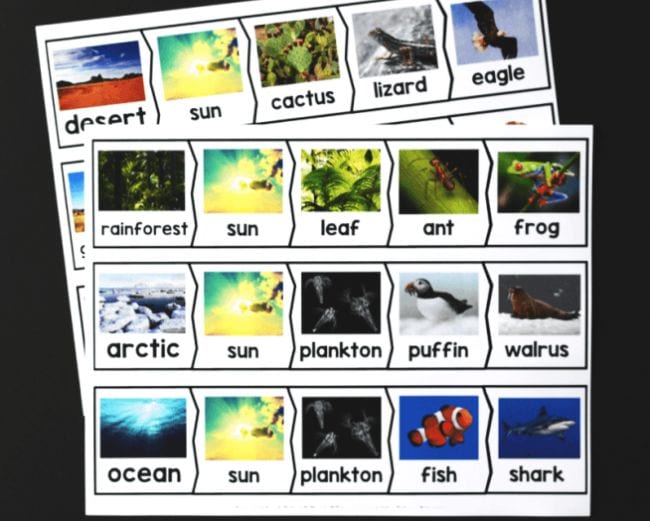
These free printable puzzles are a fun way for kids to learn a variety of food chains. (For virtual classrooms, try a digital version instead.)
5. Use a paper plate to show the circle of life
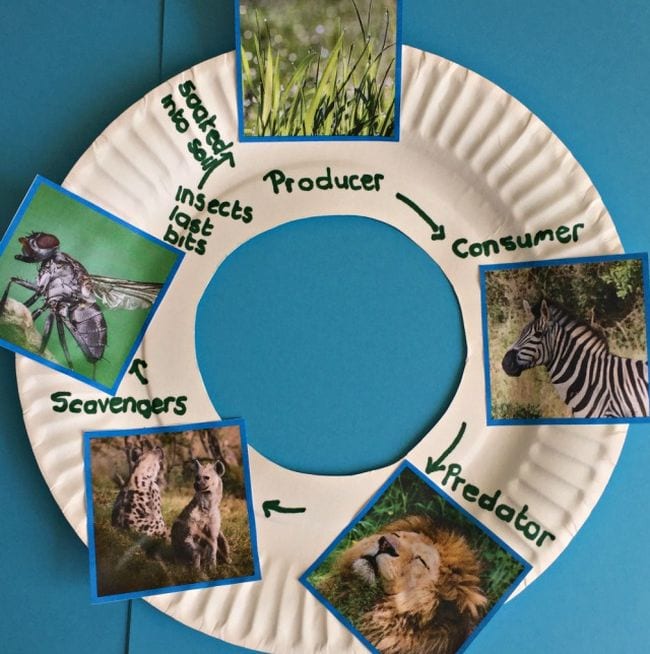
Turn kids loose with a stack of magazines, print pictures from the internet, or task them with finding their own. Then assemble them into food chains around a paper plate.
6. Try some StudyJams
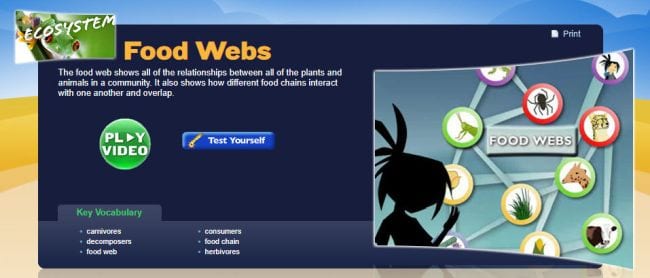
Scholastic’s Study Jams work for both in-person and online classrooms. Watch the entertaining video, then invite kids to use the self-assessment tool to check their knowledge.
7. Create food chain art

This food web activity is a science project and an art project in one. Kids choose a food chain to illustrate, then represent each part of it inside the mouth of the next creature.
8. Construct food chain pyramids

A pyramid can be a helpful way to look at how available energy decreases as you move further up the food chain. Kids will have fun illustrating their pyramids.
9. Assemble food chain links
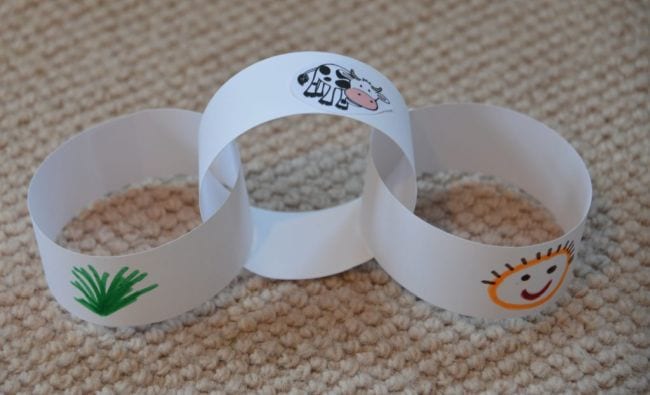
This very literal interpretation of a food chain is one that kids can easily make on their own, whether in the classroom or at home. All they need is paper, glue, scissors, and a little creativity.
10. Make food chain nesting dolls
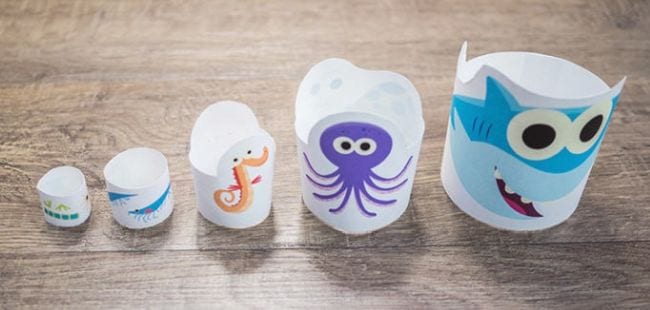
Visit Super Simple for a free printable to make these adorable ocean food chain nesting dolls. Then challenge kids to choose another ecosystem and create their own.
11. Stack food chain cups
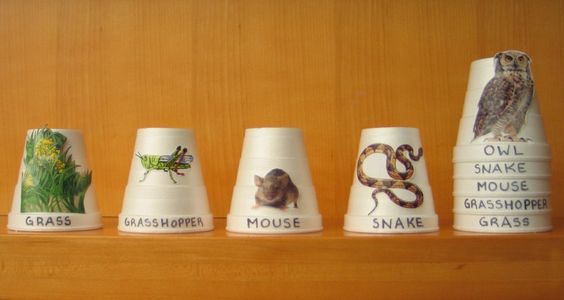
Each of these cups represents one part of a food chain. Stack them to show how they all fit together. Challenge kids to see who can stack their cups correctly in the fastest time!
12. Show food web connections with rubber bands

It’s a DIY food web geo-board! Use a bulletin board, pushpins, and rubber bands to demonstrate how different species within a food web are interconnected. Use this in a classroom science station, or complete the activity together as a whole class virtually.
13. Display a food web with model animals
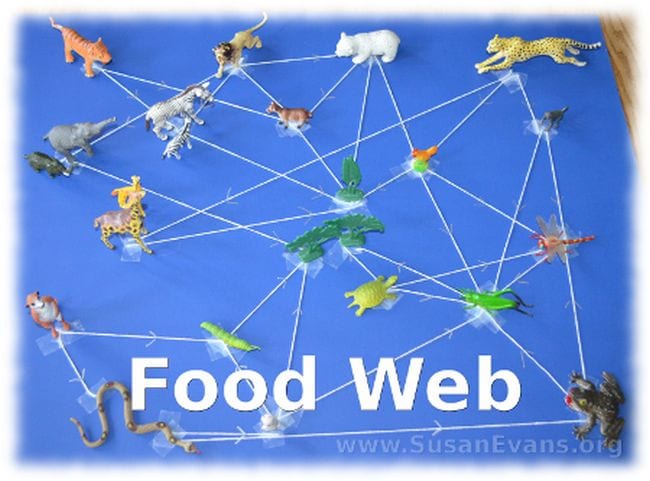
Gather up all those toy animals and put them to good use! Try using different colors of yarn to represent predators, prey, scavengers, and more. If you don’t have figurines, make a larger version with stuffed animals. At first glance, this looks like an activity for little kids, but we promise—older students love this too!
14. Turn the food web into a marble maze
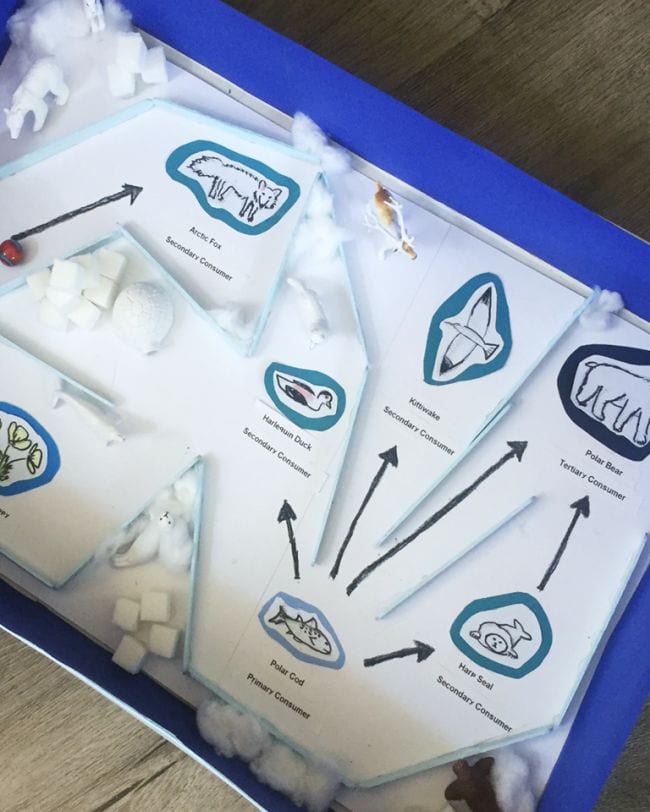
We love how this activity turns a biology lesson into a STEM challenge. Kids will get a kick out of playing with their food web marble mazes, so the learning never stops.
15. Walk a life-sized food web
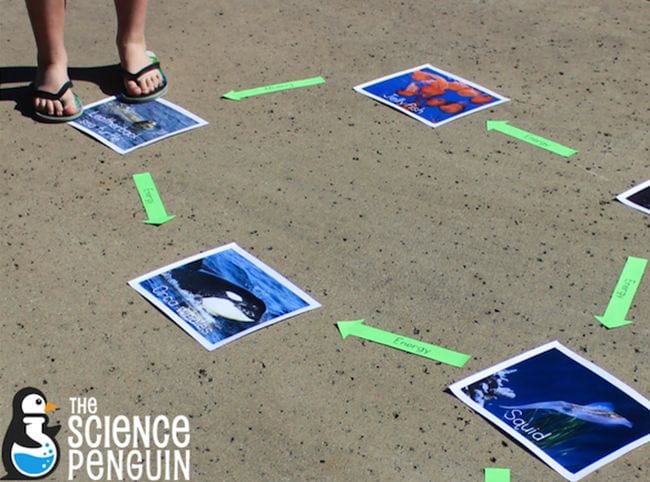
Lay out cards showing all the organisms in a food web and have kids help place arrows for the flow of energy. Then, kids can walk along the web by following the arrows to really understand how it all interacts.
16. Play a food web PE Game
This food web activity pairs the classic Rock, Paper, Scissors game with animal movements to help reinforce concepts about predators and prey.
17. Create an edible food web
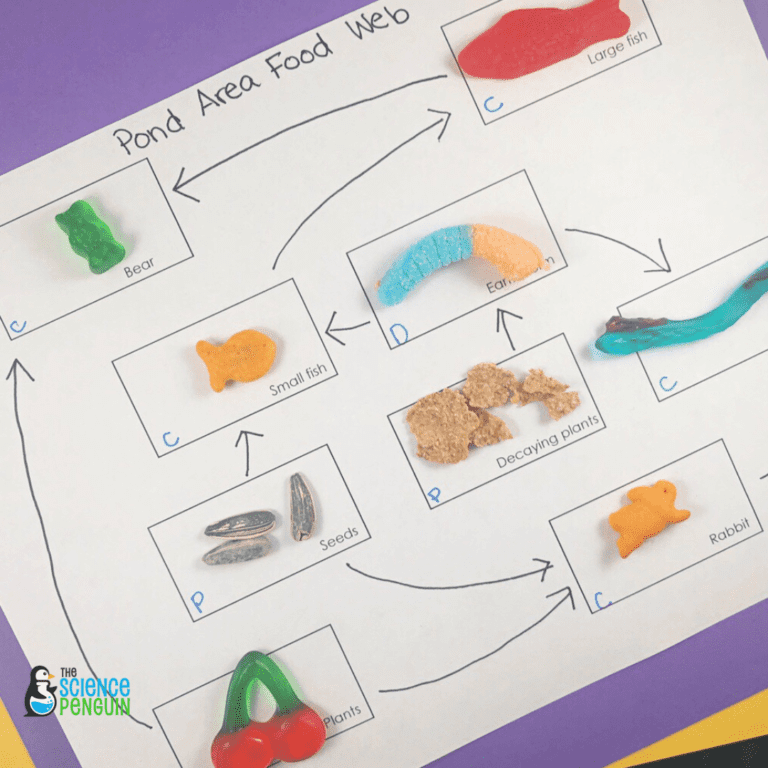
There are few things kids love more than snacks. Make food webs come alive with snacks that stand in for various plant and animal life. You’re definitely going to want to have extra goodies on hand since kids will be sure to snack while learning!
18. Create a classroom-size web with yarn
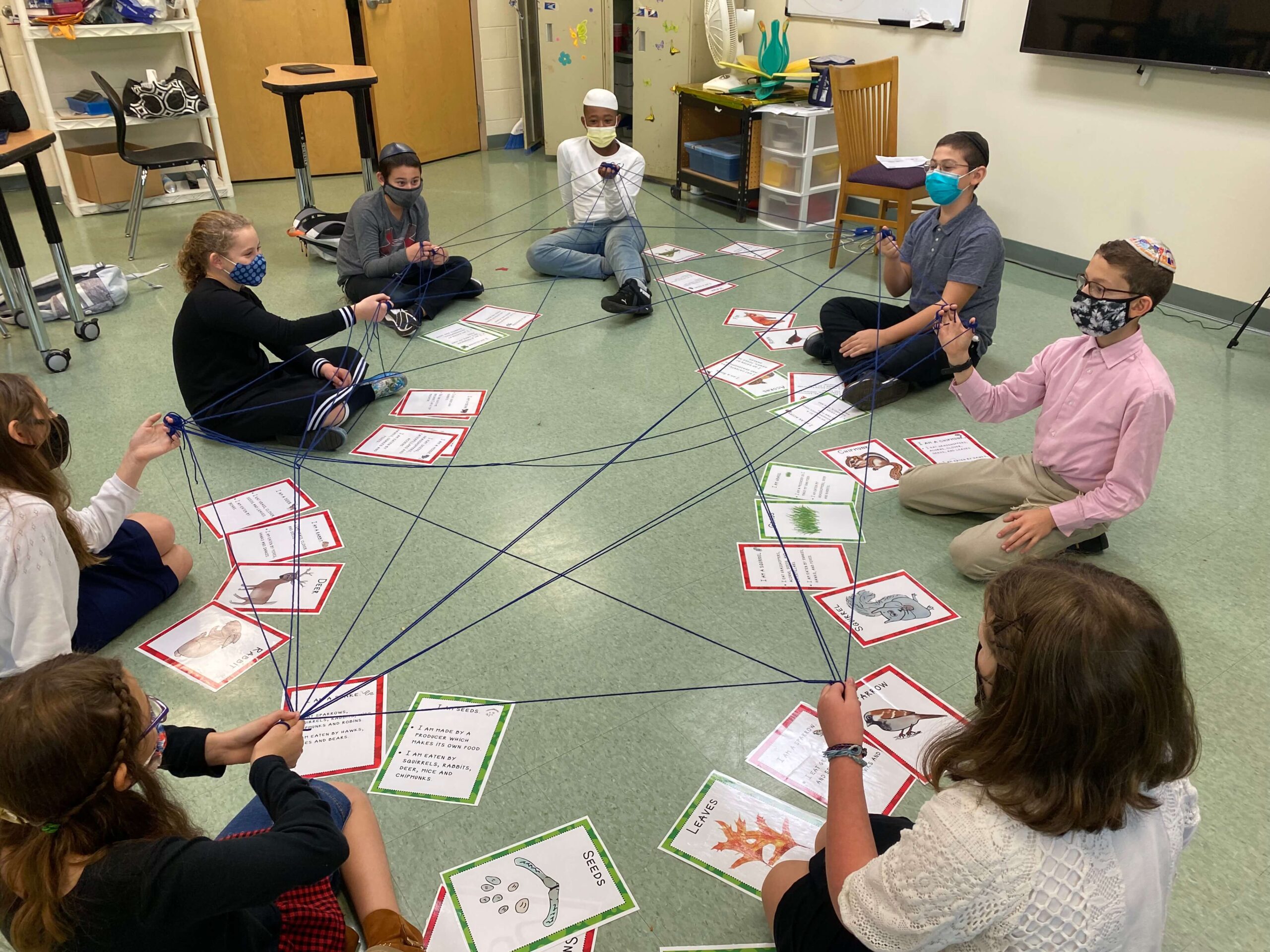
Assign each student a plant or animal and then have one student start holding a ball of yarn or string. Have students connect their string to whomever they eat and so on and so forth to create a giant (literal) web.
19. Fill some pockets
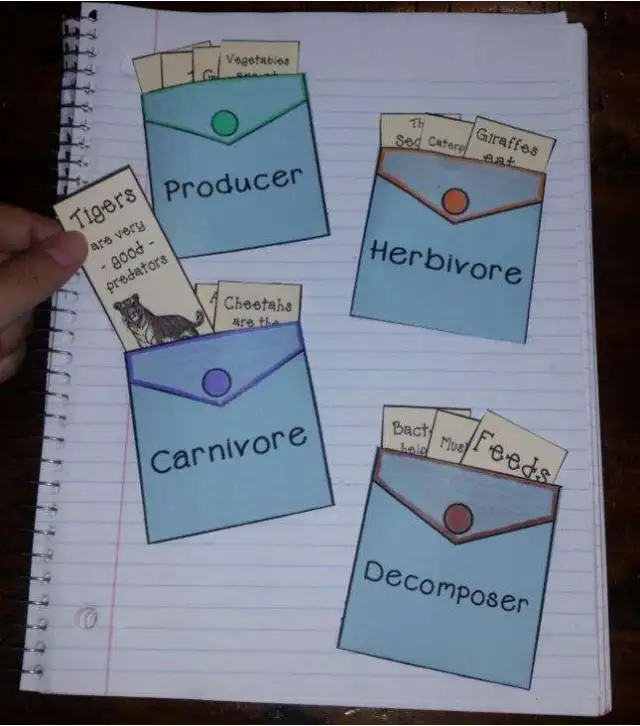
These food chain pockets are so cute and so useful in teaching kids the various categories for food chains.
20. Build a food chain chain

These “food chain chains” are the perfect project for kids to create during a food chain and food web unit. First, have them choose a biome. Then create a chain that shows the transfer of energy from producers to consumers and decomposers.
21. Explore winter food chains

Winter is a unique time for predators and prey within a cold and frozen ecosystem. Create this mobile with students to launch discussions about how energy transfer adjusts in different seasons.
22. Play a food chain energy transfer simulation game
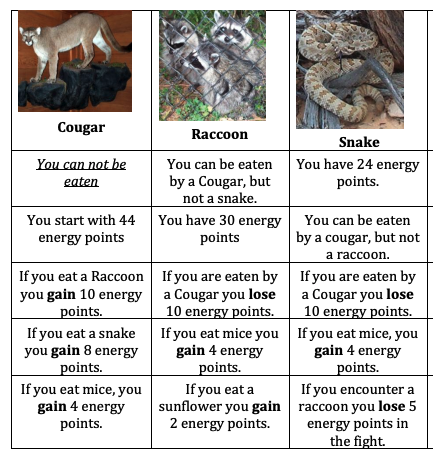
Print the cards from this lesson plan from the National Park Service, and get your students moving and competing as they participate in this food chain energy transfer simulation. Who will gain and who will lose?
23. Evaluate food web stability
Use this multi-day lesson plan from California Academy of Sciences to get older kids thinking about what happens when food webs get disturbed by natural causes or by humans.
24. Read nonfiction text about food webs
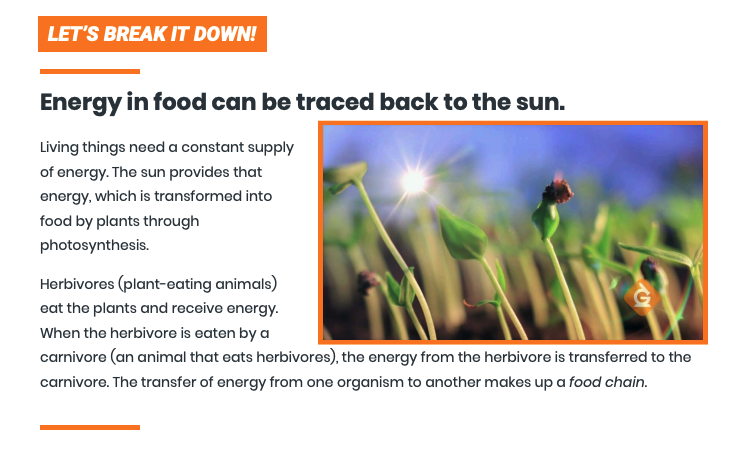
Hone students’ informational text reading skills and boost their understanding of concepts and vocabulary words with this free illustrated informational text printable from Generation Genius. It’s perfect for reviewing taught material.
25. Display a food web bulletin board
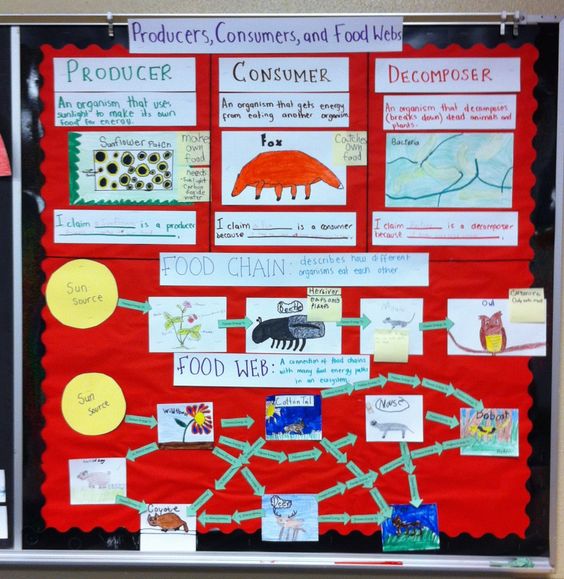
Bulletin boards are a great resource for reinforcing information in a classroom since they are on display all day. Co-create one with your students by having them create the plant and animal cards.
Plus, check out The Water Cycle for Kids (Google Slides, Video, and More)!
View the original article and our Inspiration here
